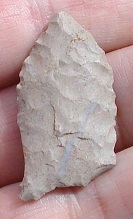ohiofinds 1
Jr. Member
- Jan 17, 2020
- 46
- 154
- Detector(s) used
- AT Pro
Carrot
- Primary Interest:
- All Treasure Hunting
I have began photographing and uploading images of our family collection.
Flints are viewable now and in the future I will add ceramics, stone, bone and others.
https://www.flickr.com/photos/157937984@N08/
Happy Hunting
Flints are viewable now and in the future I will add ceramics, stone, bone and others.
https://www.flickr.com/photos/157937984@N08/
Happy Hunting
Amazon Forum Fav 👍
Upvote
0









